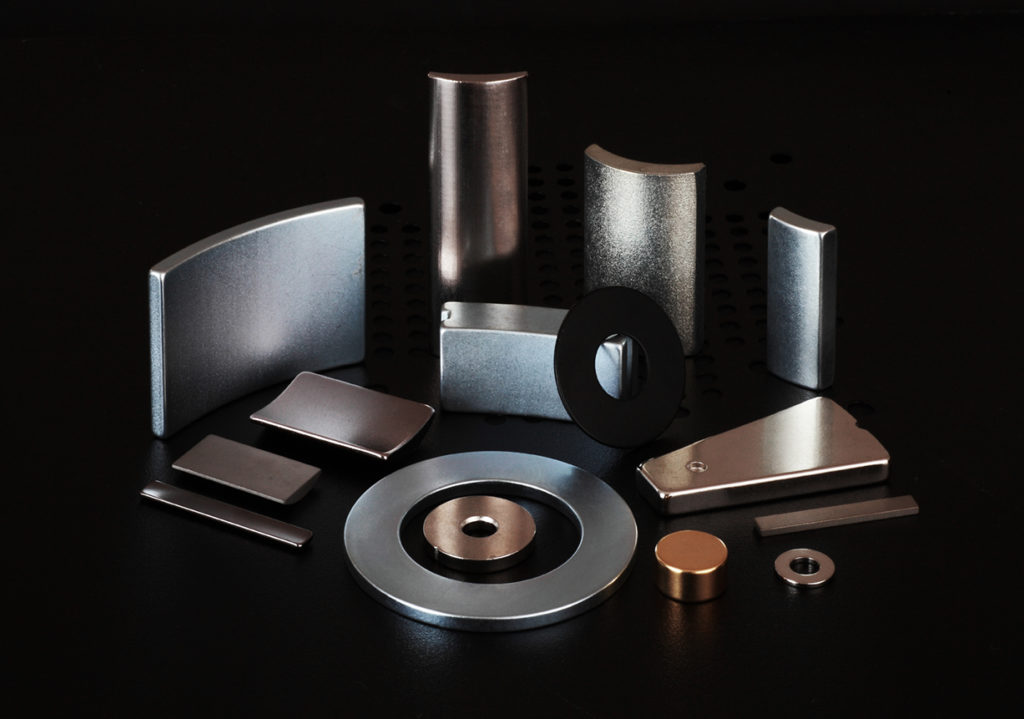
Choosing an appropriate magnet material is a crucial part of the design of a magnet assembly, as it will largely impact the performance of the final product. Here are a few tips from Dura’s decades of design experience to consider when selecting a material and grade for your assembly.
Considerations for choosing a magnet type
When considering which magnet material to choose for a design, ask these key questions:
- How will the magnet be used?
- Where will it be used?
- What temperature ranges will it be required to tolerate?
- What will it need to hold?
These questions will indicate the required cost, corrosion resistance, temperature performance, and strength requirements. Different magnet materials will be best for different needs.
At Dura, we listen to our customers to determine their goals and performance objectives for the magnet. Then we carefully choose material with the appropriate price and performance characteristics to meet the needs of the project.
Magnet materials: Pros and Cons
Each magnet material has unique characteristics resulting in specific pros and cons for a given application, as detailed below.
Samarium Cobalt: High Heat, Powerful Strength to Weight Ratio, High Cost
Samarium Cobalt is well suited for the high strength, corrosion resistance, and high operating temperatures needed in many applications. However, this alloy, since it contains cobalt, is generally more expensive than other materials. For applications where performance requirements outweigh cost, such as aerospace or medical, the cost factor may not be prohibitive as it might be for consumer and other high-volume applications.
Neodymium: High Strength, Medium Cost
Neodymium is a material that is less expensive than Samarium Cobalt, as it is an alloy made up of neodymium, iron, and boron; a strong combination that does not contain cobalt.
Although neodymium is lower in cost and high in strength, it does not have the high heat resistance or corrosion resistance of Samarium Cobalt, which could exclude it from use in certain applications.
Alnico: Low Cost, High Heat
Alnico is an aluminum-nickel-cobalt alloy that uses less cobalt than Samarium Cobalt, making it more affordable. It is the material of choice for high heat applications thanks to its high operating temperature and corrosion-resistance properties.
The tradeoff is that alnico is not as strong as other magnet materials, so the required magnet size for suitable performance will be larger. This often eliminates alnico as a material for applications such as consumer electronics that require a very small magnet size.
Ceramic: Low Cost, Corrosion Resistant
Ceramic magnets provide low-cost solutions with high corrosion resistance. However, these magnets are extremely brittle. While ideal for low-cost, medium-performance applications, machining requires diamond tooling and limits the final part to relatively simple geometries.
The Dura Difference
Each material has unique benefits and drawbacks that must be matched to the precise needs of your particular project. Choose Dura Magnetics as your design partner and let us help you make the best decisions for your application.
With more than 60 years in the magnet industry, Dura Magnetics has experience in understanding the needs of our customers including delivery and cost issues. Dura has designed and delivered magnet-based products for decades, and can help you choose the right geometry for your application and the best magnet material for the job.
Contact us for assistance in selecting the right magnet material for your application.

